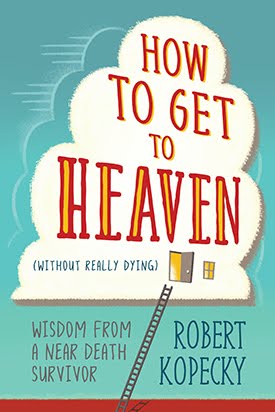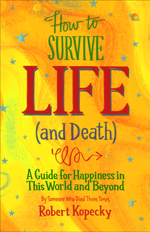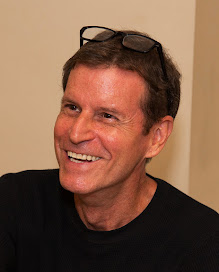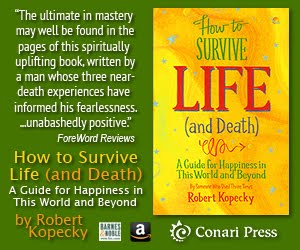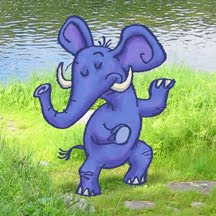That very Buddhist saying from the Bible always strikes me as a bit of a wake-up call, snapping me out of my typical rolling stupor. It just makes so much sense that it has to be true, doesn’t it? It takes me back to the challenges I had in my earliest efforts of sitting and trying to meditate – challenges I still have, sometimes, because (if you’ve tried it you know) meditating isn’t as easy as it sounds.
I used to sit uncomfortably cross-legged and think: I'm gonna do this now. Okay, it’s time to meditate. Here we go. Meditating... meditating…meditating… I'd keep my eyes closed, and wonder when it was all going to happen. Whatever it was. The image I always ended up holding in my mind was of myself sitting there, trying to meditate. It never worked, but somehow I knew that if I wanted to free myself from the vexing constraints of my typical thoughts, “imagining” would have to play a major role in the process.
For me, it meant slowly formulating three ways that could help me step aside from the incessant demands of my "normal" semi-conscious stream of thought. Then, as I practiced them, I noticed how they began to merge within my meditations. Maybe my three ways can help you too.
It's said in Gnana Yoga – the Yoga of Wisdom, that "the intellect is a ladder that can be used to transcend itself." Well, being a ‘complicated’ guy, that's what I needed at first – an intellectual entry point to a meditative state. But that's just me, because I think I think too much. So I had to start by using that – to recognize my thoughts themselves as being a simple, ongoing process that was always available to me, rather than as the self-defining dictation of every second of my life.
I used the image of me sitting in a theater in my mind, watching my thoughts parade across the screen, with an insistent narrator listing the important details of my haphazard newsreel, one after another. I became an audience member, which was a start, but I needed something more concise, more organic if I was going to use my thinking to transcend my thinking. As often happens, nature showed me a helpful metaphor.
One day, I was sitting by a river where there were a lot of little flying insects, tightly swarming. Suddenly, a flock of beautiful swallows appeared, gracefully wheeling and sweeping through the insect cloud, devouring the gnats in an incredible silent choreography of circular aerobatics. I began to watch my gnatty little thoughts being swept up by my more organized, more elegant thoughts – the product of a calm, detached objectivity. Then the flock of swallows passed, and I sat there, neither insect nor bird, but simply the witness to this remarkable process of nature. That was it! I needed to become the witness to all my different thoughts before anything else.
That was the first way.
Another way I was taught to meditate at first was to observe my mechanical, physical process of breathing. The old in breathe in through your nose, out through your mouth. Of course, the point in having you sit and count your breaths in and out, is that it gets you to shut up and sit, and to practice just sitting. Then I happened to read Chogyam Trungpa Rinpoche, and Pema Chodron, about what they called tonglen meditation, and it added powerful emotional images to the boredom of just breathing in and out. I breathed in my anxiety, and breathed out serenity. I breathed in frustration, and breathed out compassion. I breathed in the evils of the world, and breathed out the answer: I breathed in fear, and breathed out Love.
While I sat, breathing in and out with my eyes closed, I couldn't help but notice that play of energetic activity inside of my closed eyelids. What was that dance of fluctuating, effervescent energy? A kind of subtle, electric storm – vibrating, coalescing, alive. And when I coupled that optical awareness with my controlled breathing, I could see my changing internal energies – a calming of that inner, electric ocean that connected me to everything. And naturally, through observing and feeling these physical experiences, I wasn't thinking anymore.
Finally, in that place where I could be a witness to my thoughts, and to my amazing internal processes, another way opened up: I became more and more aware of not being alone. There was a benevolent, eternal presence with me all the time, calmly waiting for me to get out of my own way. It was my Native American forefather; or the lovely angel who had rescued me from my personal precipices so many times. It was the huge heart of Gandhi, the compassion of Jesus, the omniscient understanding of Krishna. I remembered a Buddhist meditation where you sit, directly facing the Buddha, sequentially mirroring the energies of his chakras down from the crown, and up again.
In my heart, I identified with the spinning dervishes, recreating Rumi's search for his lost soulmate, Shams, through the circular landscapes of his heart. I saw the rocking Hasidim, pouring over scripture, oblivious to the life of the subway car. Suddenly, I knew the ecstasy of that devotional focus. The moment of dedication to one pure, true, shared spiritual soul. I stumbled upon the devotional aspect of meditation the other approaches had allowed me (called Bhakti Yoga by Hindus).
A witness to my thoughts, to the internal magic of my very being, to the company (wholly imagined, or absolutely inter-dimensional) of transcendent, benevolent, eternal spirits carrying me along the river of Life, I suddenly discovered that I could sit in meditation. That I’d really done a lot of sitting in meditation. And that––best of all––I could find that incomparable sixth sense of freedom whenever I wanted, and whenever I needed.
And I didn't even have to think about it anymore.
“As a person doesn’t think, well…they don’t have to become that.”
Read about concepts like these and much more in: How to Get to Heaven (Without Really Dying), Wisdom From a Near-Death Survivor from Llewellyn Worldwide available direct on this page, or online. The first book: How to Survive Life (and Death), A Guide To Happiness In This World and Beyond is available the same ways – but ask for it at your local bookstore!



